 W
WBook design is the art of incorporating the content, style, format, design, and sequence of the various components and elements of a book into a coherent unit. In the words of renowned typographer Jan Tschichold (1902–1974), book design, "though largely forgotten today, [relies upon] methods and rules upon which it is impossible to improve, [and which] have been developed over centuries. To produce perfect books, these rules have to be brought back to life and applied". Richard Hendel describes book design as "an arcane subject", and refers to the need for a context to understand what that means.
 W
WBibliography, as a discipline, is traditionally the academic study of books as physical, cultural objects; in this sense, it is also known as bibliology. John Carter describes bibliography as a word having two senses, one, a list of books for further study or of works consulted by an author ; the other, one applicable for collectors, is "the study of books as physical objects" and "the systematic description of books as objects".
 W
WA blurb is a short promotional piece accompanying a piece of creative work. It may be written by the author or publisher or quote praise from others. Blurbs were originally printed on the back or rear dust jacket of a book, and are now found on web portals and news websites. A blurb may introduce a newspaper or a book.
 W
WBook design is the art of incorporating the content, style, format, design, and sequence of the various components and elements of a book into a coherent unit. In the words of renowned typographer Jan Tschichold (1902–1974), book design, "though largely forgotten today, [relies upon] methods and rules upon which it is impossible to improve, [and which] have been developed over centuries. To produce perfect books, these rules have to be brought back to life and applied". Richard Hendel describes book design as "an arcane subject", and refers to the need for a context to understand what that means.
 W
WThe body text or body copy is the text forming the main content of a book, magazine, web page, or any other printed or digital work. This is as a contrast to both additional components such as headings, images, charts, footnotes etc. on each page, and also the pages of front matter that form the introduction to a book.
 W
WA book cover is any protective covering used to bind together the pages of a book. Beyond the familiar distinction between hardcovers and paperbacks, there are further alternatives and additions, such as dust jackets, ring-binding, and older forms such as the nineteenth-century "paper-boards" and the traditional types of hand-binding. The term "Bookcover" is often used for a book cover image in library management software. This article is concerned with modern mechanically produced covers.
 W
WA frontispiece in books is a decorative or informative illustration facing a book's title page—on the left-hand, or verso, page opposite the right-hand, or recto, page. In some ancient editions or in modern luxury editions the frontispiece features thematic or allegorical elements, in others is the author's portrait that appears as the frontispiece. In medieval illuminated manuscripts, a presentation miniature showing the book or text being presented was often used as a frontispiece.
 W
WThe illustration of manuscript books was well established in ancient times, and the tradition of the illuminated manuscript thrived in the West until the invention of printing. Other parts of the world had comparable traditions, such as the Persian miniature. Modern book illustration comes from the 15th-century woodcut illustrations that were fairly rapidly included in early printed books, and later block books. Other techniques such as engraving, etching, lithography and various kinds of colour printing were to expand the possibilities and were exploited by such masters as Daumier, Doré or Gavarni.
 W
WThe size of a book is generally measured by the height against the width of a leaf, or sometimes the height and width of its cover. A series of terms is commonly used by libraries and publishers for the general sizes of modern books, ranging from folio, to quarto (smaller) and octavo. Historically, these terms referred to the format of the book, a technical term used by printers and bibliographers to indicate the size of a leaf in terms of the size of the original sheet. For example, a quarto historically was a book printed on sheets of paper folded in half twice, with the first fold at right angles to the second, to produce 4 leaves, each leaf one fourth the size of the original sheet printed – note that a leaf refers to the single piece of paper, whereas a page is one side of a leaf. Because the actual format of many modern books cannot be determined from examination of the books, bibliographers may not use these terms in scholarly descriptions.
 W
WBookbinding is the process of physically assembling a book of codex format from an ordered stack of paper sheets that are folded together into sections or sometimes left as a stack of individual sheets. The stack (signature) is then bound together along one edge by either sewing with thread through the folds or by a layer of flexible adhesive. Alternative methods of binding that are cheaper but less permanent include loose-leaf rings, individual screw posts or binding posts, twin loop spine coils, plastic spiral coils, and plastic spine combs. For protection, the bound stack is either wrapped in a flexible cover or attached to stiff boards. Finally, an attractive cover is adhered to the boards, including identifying information and decoration. Book artists or specialists in book decoration can also greatly enhance a book's content by creating book-like objects with artistic merit of exceptional quality.
 W
WA bookplate, also known as ex-librīs, is a printed or decorative label pasted into a book, often on the front endpaper, to indicate ownership. Simple typographical bookplates are termed "book labels".
 W
WThe canons of page construction are historical reconstructions, based on careful measurement of extant books and what is known of the mathematics and engineering methods of the time, of manuscript-framework methods that may have been used in Medieval- or Renaissance-era book design to divide a page into pleasing proportions. Since their popularization in the 20th century, these canons have influenced modern-day book design in the ways that page proportions, margins and type areas of books are constructed.
 W
WCarpet pages are a characteristic feature of Insular illuminated manuscripts. They are pages of mainly geometrical ornamentation, which may include repeated animal forms, typically placed at the beginning of each of the four Gospels in Gospel Books. The designation "carpet page" is used to describe those pages in Christian, Islamic, or Jewish illuminated manuscripts that contain little or no text and which are filled entirely with decorative motifs. They are distinct from pages devoted to highly decorated historiated initials, though the style of decoration may be very similar.
 W
WA chapter is one of the main divisions of a piece of writing of relative length, such as a book of prose, poetry, or law. A chapter book may have multiple chapters and these can be referred to by the things that may be the main topic of that specific chapter. In each case, chapters can be numbered or titled or both. An example of a chapter that has become well known is "Down the Rabbit-Hole", which is the first chapter from Alice's Adventures in Wonderland.
 W
WIn publishing, a colophon is a brief statement containing information about the publication of a book such as the place of publication, the publisher, and the date of publication. A colophon may include the device of a printer or publisher. Colophons are correctly printed at the ends of books, but sometimes the same information appears elsewhere and many modern (post-1800) books bear this information on the verso of the title-leaf, which is sometimes called a "biblio-page" or the "copyright-page".
 W
WThere are many real and fictitious occurrences of concealing objects in a book. Items can be concealed in books in a number of ways. Small items such as a photograph or a note can be hidden in between the pages of the book. Thicker items can be hidden by removing the interior portion of some or all of the pages, creating a book safe or hollowed-out book. Book safes are easy for their owners to recognise, but they do not stand out to a thief or other intruder.
 W
WJan Tschichold was a calligrapher, typographer and book designer. He played a significant role in the development of graphic design in the 20th century – first, by developing and promoting principles of typographic modernism, and subsequently idealizing conservative typographic structures. His direction of the visual identity of Penguin Books in the decade following World War II served as a model for the burgeoning design practice of planning corporate identity programs. He also designed the much-admired typeface Sabon.
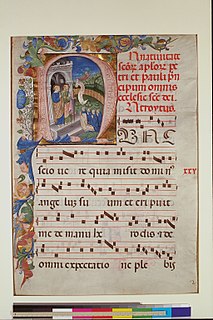 W
WDigital Scriptorium (DS) is a non-profit, tax-exempt consortium of American libraries with collections of pre-modern manuscripts, or manuscripts made in the tradition of books before printing. The DS database represents these manuscript collections in a web-based union catalog for teaching and scholarly research in medieval and Renaissance studies. It provides access to illuminated and textual manuscripts through online cataloging records, supported by high resolution digital images, retrievable by various topic searches. The DS database is an open access resource that enables users to study rare and valuable materials of academic, research, and public libraries. It makes available collections that are often restricted from public access and includes not only famous masterpieces of book illumination but also understudied manuscripts that have been previously overlooked for publication or study.
 W
WR.R. Donnelley is an American Fortune 500 integrated communications company that provides marketing and business communications, commercial printing, and related services. Its corporate headquarters are located in Chicago, Illinois, United States.
 W
WThe dust jacket of a book is the detachable outer cover, usually made of paper and printed with text and illustrations. This outer cover has folded flaps that hold it to the front and back book covers. Often the back panel or flaps are printed with biographical information about the author, a summary of the book from the publisher or critical praise from celebrities or authorities in the book's subject area. In addition to its promotional role, the dust jacket protects the book covers from damage. However, since it is itself relatively fragile, and since dust jackets have practical, aesthetic and sometimes financial value, the jacket may in turn be wrapped in another jacket, usually transparent, especially if the book is a library volume.
 W
WIn literature, an epigraph is a phrase, quotation, or poem that is set at the beginning of a document, monograph or section thereof. The epigraph may serve as a preface to the work; as a summary; as a counter-example; or as a link from the work to a wider literary canon, with the purpose of either inviting comparison or enlisting a conventional context.
 W
WA foreword is a piece of writing sometimes placed at the beginning of a book or other piece of literature. Typically written by someone other than the primary author of the work, it often tells of some interaction between the writer of the foreword and the book's primary author or the story the book tells. Later editions of a book sometimes have a new foreword prepended, which might explain in what respects that edition differs from previous ones.
 W
WGevil or Gewil or is animal hide made of whole parchment that has been prepared as a writing material in Jewish scribal documents, in particular a Sefer Torah.
 W
WGirdle books were small portable books worn by medieval European monks, clergymen and aristocratic nobles as a popular accessory to medieval costume, between the 13th and 16th centuries. They consisted of a book whose leather binding continued loose below the cover of the book in a long tapered tail with a large knot at the end which could be tucked into one's girdle or belt. The knot was usually strips of leather woven together for durability. The book hung upside down and backwards so that when swung upwards it was ready for reading. The books were normally religious: a cleric's daily Office, or for lay persons a Book of Hours. One of the best known texts to become a girdle book is Boethius's The Consolation of Philosophy, although it is the only surviving philosophical/theological girdle book.
 W
WA gloss is a brief notation, especially a marginal one or an interlinear one, of the meaning of a word or wording in a text. It may be in the language of the text or in the reader's language if that is different.
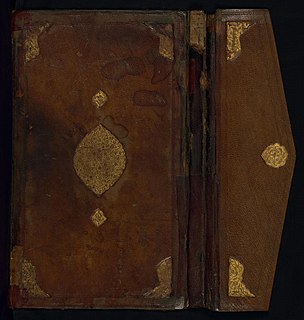 W
WA glossary also known as a vocabulary or clavis, is an alphabetical list of terms in a particular domain of knowledge with the definitions for those terms. Traditionally, a glossary appears at the end of a book and includes terms within that book that are either newly introduced, uncommon, or specialized. While glossaries are most commonly associated with non-fiction books, in some cases, fiction novels may come with a glossary for unfamiliar terms.
 W
WThe half-title or bastard title is a page carrying nothing but the title of a book—as opposed to the title page, which also lists subtitle, author, publisher and edition. The half-title is usually counted as the first page in a printed book. The half-title can have some ornamentation of the book's title, or it can be plain text.
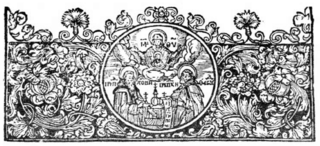 W
WHeadpiece, is a decoration printed in the blank space at the beginning of a chapter or other division of a book, usually an ornamental panel, printer's ornament or a small illustration done by a professional illustrator.
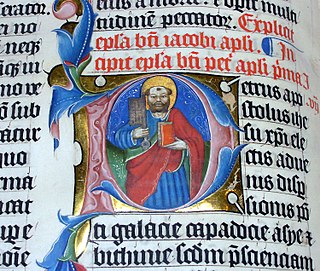 W
WA historiated initial is an initial, an enlarged letter at the beginning of a paragraph or other section of text, that contains a picture. Strictly speaking, a historiated initial depicts an identifiable figure or a specific scene, while an inhabited initial contains figures that are decorative only, without forming a subject. Both sorts became very common and elaborate in luxury illuminated manuscripts. These illustrated initials were first seen in the Insular art of the early 8th century. The earliest known example is in the Saint Petersburg Bede, an Insular manuscript of 731-46, and the Vespasian Psalter has another.
 W
WAn Iconophor, in graphic and print art, is a form of illustration characterized by the fact that the names of the objects represented in it start with a given letter. Its origins lie in medieval illuminations, though the abecedarian connection was usually coincidental in the Middle Ages.
 W
WAn illuminated manuscript is a manuscript in which the text is supplemented with such decoration as initials, borders (marginalia), and miniature illustrations. In the strictest definition, the term refers only to manuscripts decorated with either gold or silver; but in both common usage and modern scholarship, the term refers to any decorated or illustrated manuscript from Western traditions. Comparable Far Eastern and Mesoamerican works are described as painted. Islamic manuscripts may be referred to as illuminated, illustrated, or painted, though using essentially the same techniques as Western works.
 W
WAn inhabited initial is an initial, an enlarged letter at the beginning of a paragraph or other section of text that contains an illustration of human or animal figures within the letter. It is similar to a historiated initial; however, the figures in historiated initials show an identifiable scene or story, while the figures in inhabited initials do not show a narrative. Figures in inhabited initials may be related to the contents of the text, but do not have to be. They may be purely decorative instead.
 W
WIn a written or published work, an initial or drop cap is a letter at the beginning of a word, a chapter, or a paragraph that is larger than the rest of the text. The word is derived from the Latin initialis, which means standing at the beginning. An initial is often several lines in height and in older books or manuscripts, sometimes ornately decorated.
 W
WAn intentionally blank page or vacat page is a page that is devoid of content and may be unexpected. Such pages may serve purposes ranging from place-holding to space-filling and content separation. Sometimes, these pages carry a notice such as "This page intentionally left blank." Such notices typically appear in printed works, such as legal documents, manuals, and exam papers, in which the reader might otherwise suspect that the blank pages are due to a printing error and where missing pages might have serious consequences.
 W
WMarginalia are marks made in the margins of a book or other document. They may be scribbles, comments, glosses (annotations), critiques, doodles, or illuminations.
 W
WAlice Cordelia Morse was an American designer of book covers in the late 19th and early 20th centuries. Her work was inspired by the Arts and Crafts Movement, and she is often placed as one of the top three book designers of her day.
 W
WJan Tschichold was a calligrapher, typographer and book designer. He played a significant role in the development of graphic design in the 20th century – first, by developing and promoting principles of typographic modernism, and subsequently idealizing conservative typographic structures. His direction of the visual identity of Penguin Books in the decade following World War II served as a model for the burgeoning design practice of planning corporate identity programs. He also designed the much-admired typeface Sabon.
 W
WAn obi is a strip of paper looped around a book or other product. This extends the term obi used for Japanese clothing; it is written with the same kanji. It is also referred to as a tasuki , or more narrowly as obigami .
 W
WPage numbering is the process of applying a sequence of numbers to the pages of a book or other document. The number itself, which may appear in various places on the page, can be referred to as a page number or as a folio. Like other numbering schemes such as chapter numbering, page numbers allow the citation of a particular page of the numbered document and facilitates to the reader to find specific parts of the document and to know the size of the complete text.
 W
WPaper size standards govern the size of sheets of paper used as writing paper, stationery, cards, and for some printed documents.
 W
WParchment is a writing material made from specially prepared untanned skins of animals—primarily sheep, calves, and goats. It has been used as a writing medium for over two millennia. Vellum is a finer quality parchment made from the skins of young animals such as lambs and young calves.
 W
WA picture cover is a type of book cover which uses a method of bookbinding that preserves the contents as well as a normal hardbound book, but has the look of a paperback book. The pages are collated, stitched and trimmed as for hardbound, but a cover with a picture on it is attached instead of the normal hardbound cover with printing on the spine — and perhaps front. A hardbound book can achieve a similar look with a dust cover, but the cover is fragile and inconvenient when reading, being most useful while the book is shelved.
 W
WA preface or proem is an introduction to a book or other literary work written by the work's author. An introductory essay written by a different person is a foreword and precedes an author's preface. The preface often closes with acknowledgments of those who assisted in the literary work.
 W
WThe printer’s key, also known as the number line, is a line of text printed on the copyright page of books, used to indicate the print run. Publishers began this convention about the middle of the 20th century.
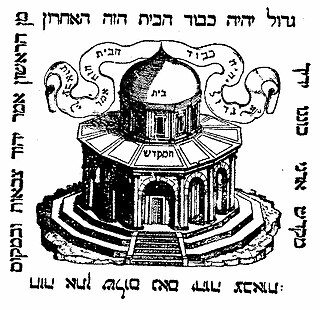 W
WA printer's mark, device, emblem or insignia is a symbol that was used as a trademark by early printers starting in the 15th century.
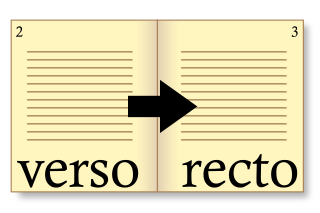 W
WRecto is the "right" or "front" side and verso is the "left" or "back" side when text is written or printed on a leaf of paper in a bound item such as a codex, book, broadsheet, or pamphlet.
 W
WIn books and documents, a section is a subdivision, especially of a chapter.
 W
WA slipcase is a five-sided box, usually made of high-quality cardboard, into which binders, books or book sets are slipped for protection, leaving the spine exposed. Special editions of books are often slipcased. A few publishers, such as the Folio Society, publish all their books in slipcases.
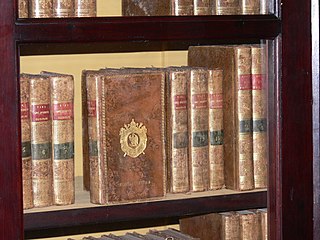 W
WA supralibros is a coat of arms or monogram indicating the ownership of a book. Unlike the bookplate or ex-libris, which is stamped or pasted inside a book, the supralibros is applied to the book's cover.
 W
WA table of contents, usually headed simply Contents and abbreviated informally as TOC, is a list, usually found on a page before the start of a written work, of its chapter or section titles or brief descriptions with their commencing page numbers.
 W
WText annotation is the practice and the result of adding a note or gloss to a text, which may include highlights or underlining, comments, footnotes, tags, and links. Text annotations can include notes written for a reader's private purposes, as well as shared annotations written for the purposes of collaborative writing and editing, commentary, or social reading and sharing. In some fields, text annotation is comparable to metadata insofar as it is added post hoc and provides information about a text without fundamentally altering that original text. Text annotations are sometimes referred to as marginalia, though some reserve this term specifically for hand-written notes made in the margins of books or manuscripts. Annotations are extremely useful and help to develop knowledge of English literature.
 W
WA thumb index, also called a cut-in index or an index notch, is a round cut-out in the pages of dictionaries, encyclopedias, Bibles and other large religious books, and various sectioned, often alphabetic, reference works, used to locate entries starting at a particular letter or section. The individual notches are called thumb cuts.
 W
WThe title page of a book, thesis or other written work is the page at or near the front which displays its title, subtitle, author, publisher, and edition.
 W
WIn typography, titling capitals are a variant of uppercase designed for heading and titles. The stroke width is reduced for use at larger point sizes where the stroke weight used in smaller text sizes would be too heavy.
 W
WA treasure binding or jewelled bookbinding is a luxurious book cover using metalwork in gold or silver, jewels, or ivory, perhaps in addition to more usual bookbinding material for book-covers such as leather, velvet, or other cloth. The actual bookbinding technique is the same as for other medieval books, with the folios, normally of vellum, stitched together and bound to wooden cover boards. The metal furnishings of the treasure binding are then fixed, normally by tacks, onto these boards. Treasure bindings appear to have existed from at least Late Antiquity, though there are no surviving examples from so early, and Early Medieval examples are very rare. They were less used by the end of the Middle Ages, but a few continued to be produced in the West even up to the present day, and many more in areas where Eastern Orthodoxy predominated. The bindings were mainly used on grand illuminated manuscripts, especially gospel books designed for the altar and use in church services, rather than study in the library.
 W
WVellum is prepared animal skin or "membrane", typically used as a material for writing on. Parchment is another term for this material, and if vellum is distinguished from this, it is by vellum being made from calfskin, as opposed to that from other animals, or otherwise being of higher quality. Vellum is prepared for writing or printing on, to produce single pages, scrolls, codices or books. The word is borrowed from Old French vélin 'calfskin', from the Latin word vitulinum 'made from calf'.
 W
WThe Very Hungry Caterpillar is a children's picture book designed, illustrated, and written by Eric Carle, first published by the World Publishing Company in 1969, later published by Penguin Putnam. The book features a very hungry caterpillar who eats his way through a wide variety of foodstuffs before pupating and emerging as a butterfly. The winner of many children's literature awards and a major graphic design award, it has sold almost 50 million copies worldwide. It has been described as having sold the equivalent of a copy per minute since its publication, and as "one of the greatest childhood classics of all time". It was voted the number two children's picture book in a 2012 survey of School Library Journal readers.
 W
WWoodblock printing or block printing is a technique for printing text, images or patterns used widely throughout East Asia and originating in China in antiquity as a method of printing on textiles and later paper. As a method of printing on cloth, the earliest surviving examples from China date to before 220 AD. Woodblock printing existed in Tang China by the 7th century AD and remained the most common East Asian method of printing books and other texts, as well as images, until the 19th century. Ukiyo-e is the best-known type of Japanese woodblock art print. Most European uses of the technique for printing images on paper are covered by the art term woodcut, except for the block-books produced mainly in the 15th century.